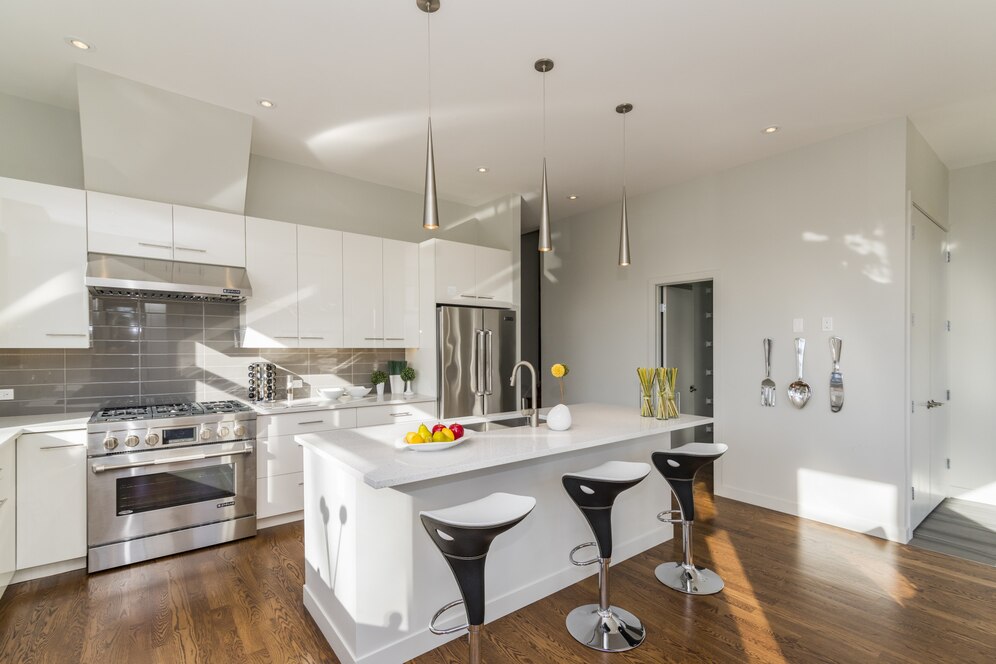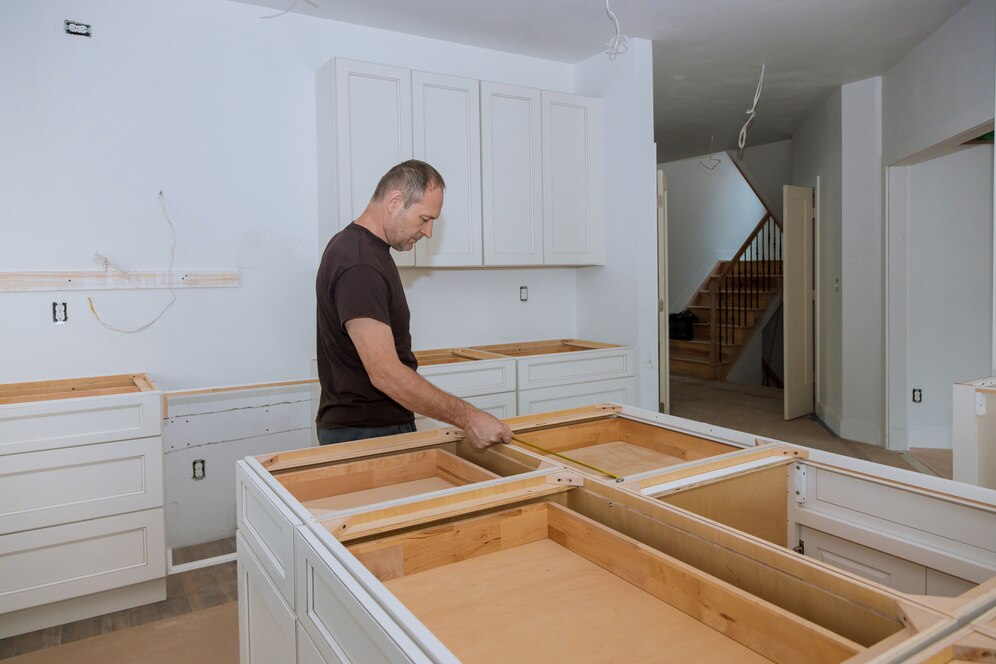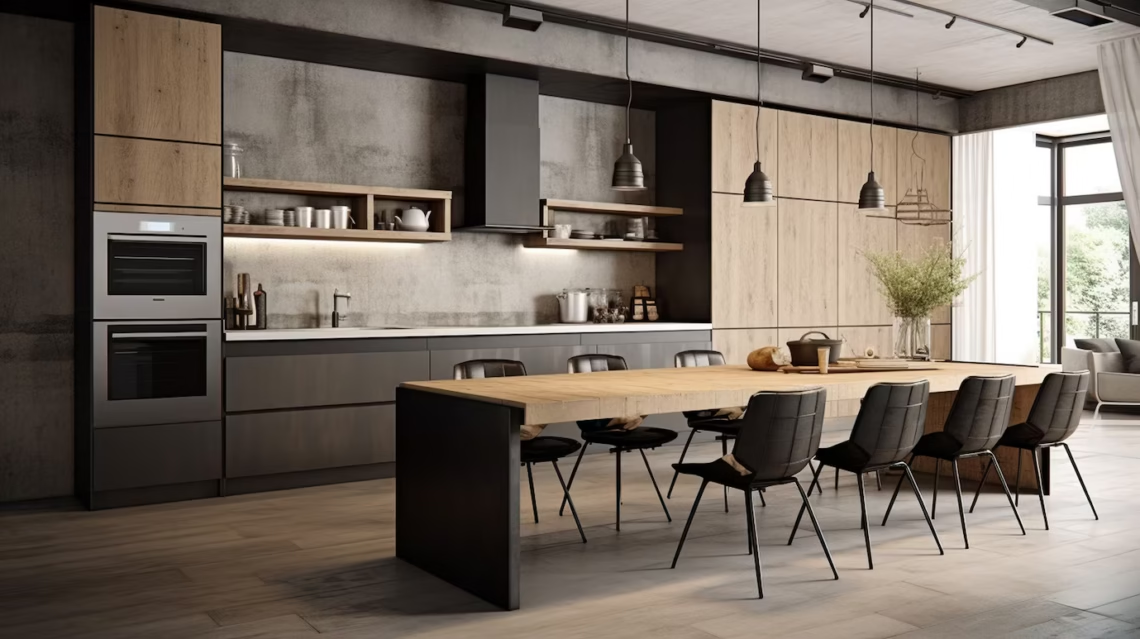Guide to Kitchen remodeling is one of the most popular home improvement projects, and for good reason. A well-designed kitchen not only enhances the functionality of your home but also adds significant value to your property. Whether you’re looking to create a modern, sleek kitchen or a cozy, traditional space, understanding the guide to kitchen remodeling is essential to ensure a smooth and successful project.
In this detailed Guide to Kitchen Remodeling, we’ll take you through the essential stages of transforming your kitchen, from initial planning and budgeting to execution and final touches. By the end, you’ll have a clear plan to turn your kitchen into the dream space you’ve always wanted.
1. Define Your Goals and Priorities

Before diving into the remodeling process, it’s crucial to define your goals and priorities. Ask yourself the following questions:
- What is the primary purpose of the remodel? Are you looking to improve functionality, increase storage, update the style, or boost your home’s resale value?
- What is your budget? Establishing a budget early on will help you make informed decisions throughout the project.
- What is your timeline? Determine how long you’re willing to dedicate to the remodeling process, including any deadlines for special occasions or events.
By clarifying your goals, you’ll have a clear vision of what you want to achieve, which will guide every decision you make during the remodeling process.
2. Set a Realistic Budget
Kitchen remodeling can range from a minor refresh to a full-scale renovation, and costs can vary significantly depending on the scope of the project. To set a realistic budget:
- Research average costs: According to HomeAdvisor, the average cost of a kitchen remodel in the U.S. ranges from 13,000to13,000to37,000, with high-end projects exceeding $50,000.
- Allocate funds wisely: Divide your budget into categories such as cabinets, countertops, appliances, flooring, labor, and contingencies (typically 10-20% of the total budget for unexpected expenses).
- Prioritize must-haves: Identify the elements that are most important to you and allocate a larger portion of your budget to those areas.
Remember, a well-planned budget will help you avoid overspending and ensure that you get the most value out of your investment.
3. Plan the Layout

A well-planned kitchen layout is one of the most important elements in your Guide to Kitchen Remodeling. An efficient design maximizes functionality, streamlines workflow, and elevates the overall look and feel of your space. Whether you’re working with a compact area or a spacious kitchen, the right layout ensures a seamless and enjoyable cooking experience. Here are some key considerations:
- Work Triangle: The classic kitchen work triangle connects the sink, stove, and refrigerator. Ensure that these elements are positioned for optimal efficiency.
- Traffic Flow: Consider how people move through the kitchen and avoid placing obstacles in high-traffic areas.
- Storage Solutions: Plan for ample storage, including cabinets, drawers, and pantry space, to keep your kitchen organized and clutter-free.
- Island or Peninsula: If space allows, consider adding an island or peninsula for additional counter space, storage, and seating.
If you’re unsure about the best layout for your kitchen, consult with a professional designer who can provide expert advice tailored to your needs.
4. Choose Your Design Style
Your kitchen’s design style plays a crucial role in setting the tone for the entire space. As outlined in this Guide to Kitchen Remodeling, selecting a cohesive aesthetic—whether it’s sleek and modern, warm and farmhouse-inspired, or another style—ensures all elements work together seamlessly. Popular options include contemporary, transitional, industrial, and rustic designs, each offering unique charm and functionality.:
- Modern: Clean lines, sleek surfaces, and minimal ornamentation.
- Traditional: Timeless designs with intricate details and warm finishes.
- Transitional: A blend of modern and traditional elements for a balanced look.
- Rustic: Natural materials, distressed finishes, and a cozy, inviting feel.
- Industrial: Exposed brick, metal accents, and a raw, unfinished aesthetic.
Once you’ve chosen a style, select materials, colors, and finishes that align with your vision.
5. Select Materials and Finishes

The materials and finishes you choose will have a significant impact on the look, feel, and durability of your kitchen. Key elements to consider include:
- Cabinets: Choose from a variety of materials such as wood, laminate, or thermofoil. Consider the door style, color, and hardware for a cohesive look.
- Countertops: Popular options include granite, quartz, marble, and butcher block. Each material has its own unique benefits and maintenance requirements.
- Backsplash: Tile, glass, and stone are popular choices for backsplashes. Consider a design that complements your countertops and cabinets.
- Flooring: Durable and easy-to-clean options like hardwood, tile, and vinyl are ideal for kitchens.
- Lighting: Incorporate a mix of task, ambient, and accent lighting to create a functional and inviting space.
Take your time to explore different options and choose materials that align with your style, budget, and lifestyle.
6. Hire Professionals

While some homeowners may attempt a DIY kitchen remodel, hiring professionals is often the best way to ensure a high-quality result. Key professionals to consider include:
- General Contractor: Oversees the entire project, coordinates subcontractors, and ensures that the work is completed on time and within budget.
- Kitchen Designer: Helps you create a functional and aesthetically pleasing layout and selects materials and finishes.
- Plumber and Electrician: Handles any plumbing or electrical work, such as installing new fixtures or rewiring the space.
- Carpenter: Builds and installs custom cabinets, shelves, and other woodwork.
When hiring professionals, be sure to check their credentials, read reviews, and ask for references to ensure that you’re working with reputable and experienced individuals.
7. Demolition and Preparation
Once the planning and design phases are complete, it’s time to prepare your kitchen for the remodel. This typically involves:
- Demolition: Removing old cabinets, countertops, flooring, and appliances to make way for the new design.
- Structural Changes: If your remodel includes structural changes, such as removing walls or adding windows, this is the time to complete those modifications.
- Plumbing and Electrical Work: Update or relocate plumbing and electrical systems as needed to accommodate the new layout.
Be prepared for some disruption during this phase, as your kitchen will likely be unusable for a period of time.
8. Installation

With the preparation work complete, the installation phase can begin. This is where your new kitchen starts to take shape. Key steps include:
- Cabinets: Install new cabinets according to the planned layout.
- Countertops: Measure and install countertops, ensuring a precise fit.
- Appliances: Install new appliances, such as the refrigerator, stove, and dishwasher.
- Flooring: Lay down new flooring, whether it’s hardwood, tile, or another material.
- Backsplash: Install the backsplash to protect your walls and add a decorative touch.
Throughout the installation process, it’s important to communicate regularly with your contractor to address any issues or concerns that may arise.
9. Finishing Touches
The finishing touches are what bring your kitchen remodel to life. This phase includes:
- Painting: Apply a fresh coat of paint to the walls, trim, and ceiling to complete the look.
- Hardware: Install cabinet knobs, pulls, and other hardware for a polished appearance.
- Lighting Fixtures: Install pendant lights, chandeliers, or under-cabinet lighting to enhance the ambiance.
- Decor: Add personal touches such as artwork, plants, and decorative accessories to make the space feel like home.
Take your time with these final details, as they can significantly impact the overall look and feel of your kitchen.
10. Final Inspection and Clean-Up
Before declaring your kitchen remodel complete, conduct a final inspection to ensure that everything has been done to your satisfaction. Check for any issues such as uneven cabinets, loose tiles, or malfunctioning appliances. Once everything is in order, perform a thorough clean-up to remove any dust, debris, or construction residue.
11. Enjoy Your New Kitchen
Congratulations! Your kitchen remodel is now complete. Take the time to enjoy your new space and appreciate the hard work and dedication that went into creating it. Whether you’re cooking a family meal, entertaining guests, or simply enjoying a cup of coffee, your new kitchen is sure to bring joy and functionality to your home for years to come.
Tips for a Successful Kitchen Remodel
- Stay Organized: Keep track of all documents, contracts, and receipts related to your remodel.
- Communicate Clearly: Maintain open communication with your contractor and design team to avoid misunderstandings.
- Be Flexible: Unexpected challenges may arise during the remodeling process, so be prepared to adapt as needed.
- Focus on Quality: Invest in high-quality materials and workmanship to ensure a durable and long-lasting result.
Conclusion
Kitchen remodeling is a significant undertaking, but with careful planning and execution, it can transform your home and enhance your quality of life. By following these basic steps—defining your goals, setting a budget, planning the layout, choosing materials, hiring professionals, and completing the installation—you can create a kitchen that is both beautiful and functional.
Whether you’re looking to update a few key elements or undergo a complete overhaul, this guide provides the foundation you need to achieve your dream kitchen. So, roll up your sleeves, gather your ideas, and get ready to embark on an exciting journey toward a kitchen that reflects your style and meets your needs.




